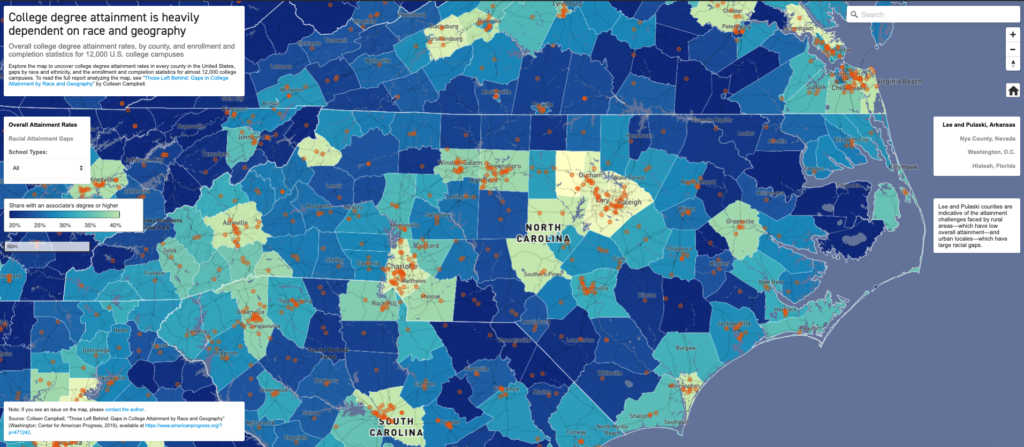

July 24, 2019

By: James Mikolowsky, Policy Analyst, The Hunt Institute
As part of the myFutureNC blog series, we periodically share research on attainment to make connections between national work and our efforts here in North Carolina. Colleen Campbell, Director for Postsecondary Education at Center for American Progress, recently published a report and accompanying interactive map that highlights the impact that both race and geography may have on postsecondary attainment.
 Source: Center for American Progress
Source: Center for American Progress
As the cost of higher education continues to rise, states and institutions are working to better inform students as consumers of higher education. Many of the living expenses that make up a key part of the true cost of college – such as rent payments, gas expenses, and food costs – are affected by a student’s distance from their school. Education policy experts who appreciate this dynamic have begun to offer analyses and arguments that place more of an emphasis on geographic location of institutions of higher education (IHEs) as a factor that affects postsecondary access and success rates.
The latest example of such work is a report released last month by the Center for American Progress (CAP), titled Those Left Behind: Gaps in College Attainment by Race and Geography. The author, Colleen Campbell, used data from the Census Bureau and the US Department of Education to create an interactive map that overlays postsecondary attainment rates, including attainment gaps for students of color, with specific geographic locations of IHE campuses. The map, which is broken down to the county level, allows regional leaders to understand their community’s attainment needs at a more granular level.
From a national perspective, Campbell noticed two “contrasting narratives” emerge:
Those national narratives are present to some extent in North Carolina, where the CAP report’s data show that:
Using this regional lens to view the postsecondary attainment landscape at the county level can be a helpful framing for state and local leaders as they work toward the myFutureNC goal of #2millionby2030.
Author

James Mikolowsky
Policy Analyst, The Hunt Institute